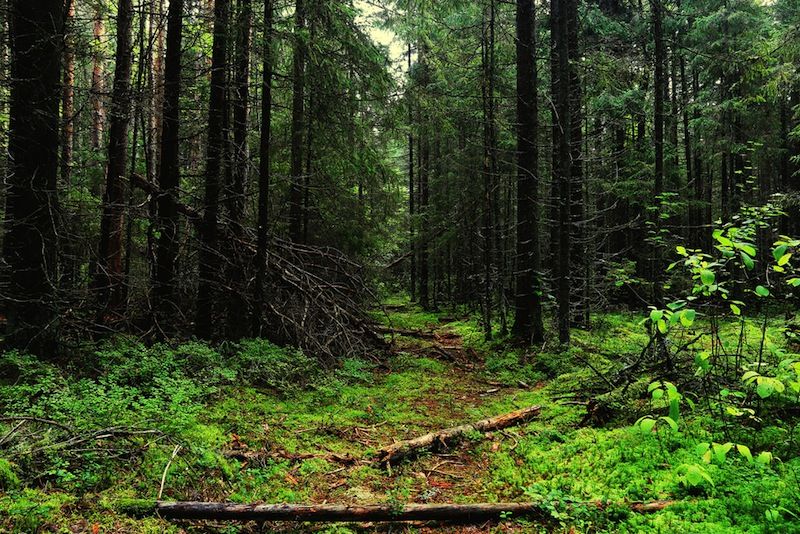
SAN FRANCISCO — Drought could kill vast swaths of forests around the world if global warming isn't contained, new research suggests.
That's in part because a fundamental structure found in trees may limit how much they can adapt to parched conditions.
What's more, climate predictions seem to suggest that droughts will be much more common in the United States, said William Anderegg, a biologist at Princeton University who studies forests and climate change. [Dry and Dying: Images of Drought]
"The droughts of the future look to be more frequent and more severe," Anderegg said here yesterday (Dec. 14) at the annual meeting of the American Geophysical Union.
However, there's a potential silver lining in the (absent) clouds: If humans can reduce their carbon emissions sufficiently, the worst drought scenarios may not play out, leaving hope that more forests will survive, Anderegg said.
Uncertain models
Climate models of the impacts of forests on carbon emissions have come to wildly divergent conclusions. Some viewed forests as natural carbon "sinks" that absorb and trap carbon dioxide, thus helping to reduce the amount of greenhouse gases in the atmosphere. But others see forests as a significant source of atmospheric carbon.
Sign up for the Live Science daily newsletter now
Get the world’s most fascinating discoveries delivered straight to your inbox.
This huge uncertainty came from one problem: People weren't sure exactly how many trees would be around in the future. (Beyond that, people didn't even know how many trees were on Earth right now. Until recently, scientists assumed that there were about 400 billion trees on Earth, but another study presented here put the number of trees on Earth at a whopping 3.04 trillion.)
At its heart, though, the disparity stemmed from uncertainty about whether plants would respond to the coming droughts. A plant's response to drought is enormously complicated — water shortage can kill a tree in many ways, from making it more susceptible to bark beetles to producing conditions ripe for wildfires that could burn down a whole forest, Anderegg said.
Hydraulic factors
However, one factor seemed to play an outsize role in a tree's ability to adapt to parched conditions. Plants suck water up through their xylem, the vascular system that threads through a tree's roots and branches, by creating a pressure gradient. The less water there is in the soil, the harder these plants have to suck.
"At a certain point, which varies by species and tissue, we start to get air bubbles pulled into these xylem elements," Anderegg said.
When enough of these air bubbles form in the xylem, they form an embolism, similar to the kind found in humans, that blocks the flow of needed water and nutrients, leading to "hydraulic failure," Anderegg said.
"This may be the dominant process we've got to get at to predict tree mortality," he added.
In a study published in the journal Nature Geoscience earlier this year, Anderegg and his colleagues calculated the hydraulic failure point of trembling aspen (Populus tremuloides) in Colorado, and found that those forests would die off if the hotter climate predictions came to pass.
In follow-up research, he and his team found that the plant hydraulics seem to vary more among individual trees in a stand than they do among species or even different types of trees. Given that researchers know some plant types are much more resilient to drought than others (think of a cactus versus a fern), the findings suggest that the current definitions of plant types may not fully capture the diverse responses of plants to drought, he said.
Exactly how plants seem to recover may also depend on how frequently the drought occurs, Anderegg said. He and his colleagues have found that there's a fairly pervasive effect of drought on tree growth that lasts for two to four years after a drought period, with some forest regions having a stronger drought effect than others.
"There are fairly strong legacy effects in the southwestern U.S." Anderegg said.
So, if drought occurs more frequently than that, trees in a forest may never return to their full stature, he said.
Follow Tia Ghose on Twitter and Google+. Follow Live Science @livescience, Facebook & Google+. Original article on Live Science.

Tia is the managing editor and was previously a senior writer for Live Science. Her work has appeared in Scientific American, Wired.com and other outlets. She holds a master's degree in bioengineering from the University of Washington, a graduate certificate in science writing from UC Santa Cruz and a bachelor's degree in mechanical engineering from the University of Texas at Austin. Tia was part of a team at the Milwaukee Journal Sentinel that published the Empty Cradles series on preterm births, which won multiple awards, including the 2012 Casey Medal for Meritorious Journalism.











